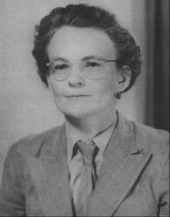Elizabeth Alexander
Geologist and physicist (1908-1958)
Arguably the world’s first female radio astronomer, Elizabeth Alexander investigated the "Norfolk Island Effect" while in New Zealand during the World War II. After an airman noticed increased radio interference at sunrise and sunset near Norfolk Island, Alexander found that the phenomenon was connected with radiation from the sun – an effect now known as sunspots.
Alexander, who had a Cambridge University PhD in geology, had followed her New Zealand physicist husband to Singapore. There she studied weathering before taking up radio direction finding as a Captain during the war. In 1942 she and her children were evacuated to New Zealand, where she was stranded and mistakenly told her husband was dead.
For the next three years Alexander led radio and radar research in New Zealand. She pioneered radio meteorology and her work in 1945 marked the beginning of radio astronomy in Australasia. After the war Alexander returned to geology and followed her husband in posts around the world.
Reference:
Wayne Orchiston, Exploring the History of New Zealand Astronomy: Trials, Tribulations, Telescopes and Transits (Springer, 2015).
This profile is part of the series 150 Women in 150 Words that celebrates women’s contributions to expanding knowledge in New Zealand, running as part of our 150th Anniversary.

